Today’s modern gardens keep it simple with no-fuss plants, straightforward designs, and a focus on the natural and sustainable. For example, many city dwellers enjoy contemporary rooftop gardens, as shown above, which feature clean lines, varied heights, low maintenance plants, and repeated patterns. These, among other features, are the foundations upon which most present-day gardens are created.
Let’s take a look at the top 10 tips for creating our own stylish, contemporary garden design:
Vary your heights
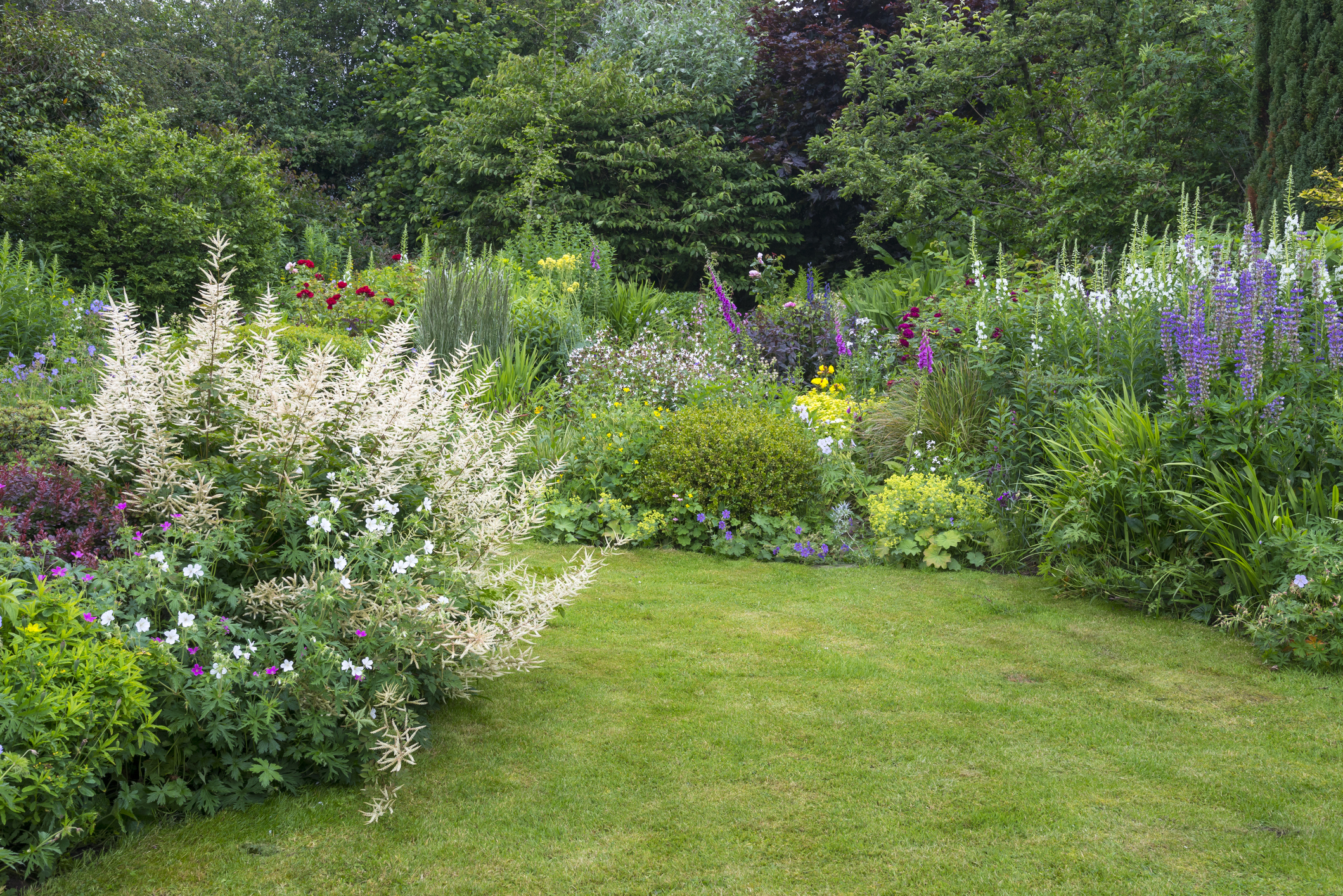
Plant short, tall, and medium-height plants and flowers, plus shrubs, trees, and decor to give your garden dimension. Pathways, steps, and walls can add to this multi-level gardening strategy, as well. This draws the eye across the landscape to give each area its warranted attention. For some, it ultimately allows for the feeling of being immersed in the garden.
Use natural, sustainable, local products and methods, i.e., wood, stone, or native plants
Keeping it natural, local, and sustainable is essential for today’s fresh gardens, and important for several reasons. Not only are these gardens eco-friendly, attracting numerous pollinators, but they’re also beneficial for erosion control and drainage due to native plants’ deep roots. What’s more? If organic gardening (a key element of sustainability) is implemented, the soil is nourished, resources are conserved, and the environment is ultimately protected.
Use lighting to highlight certain aspects of the garden when it gets dark
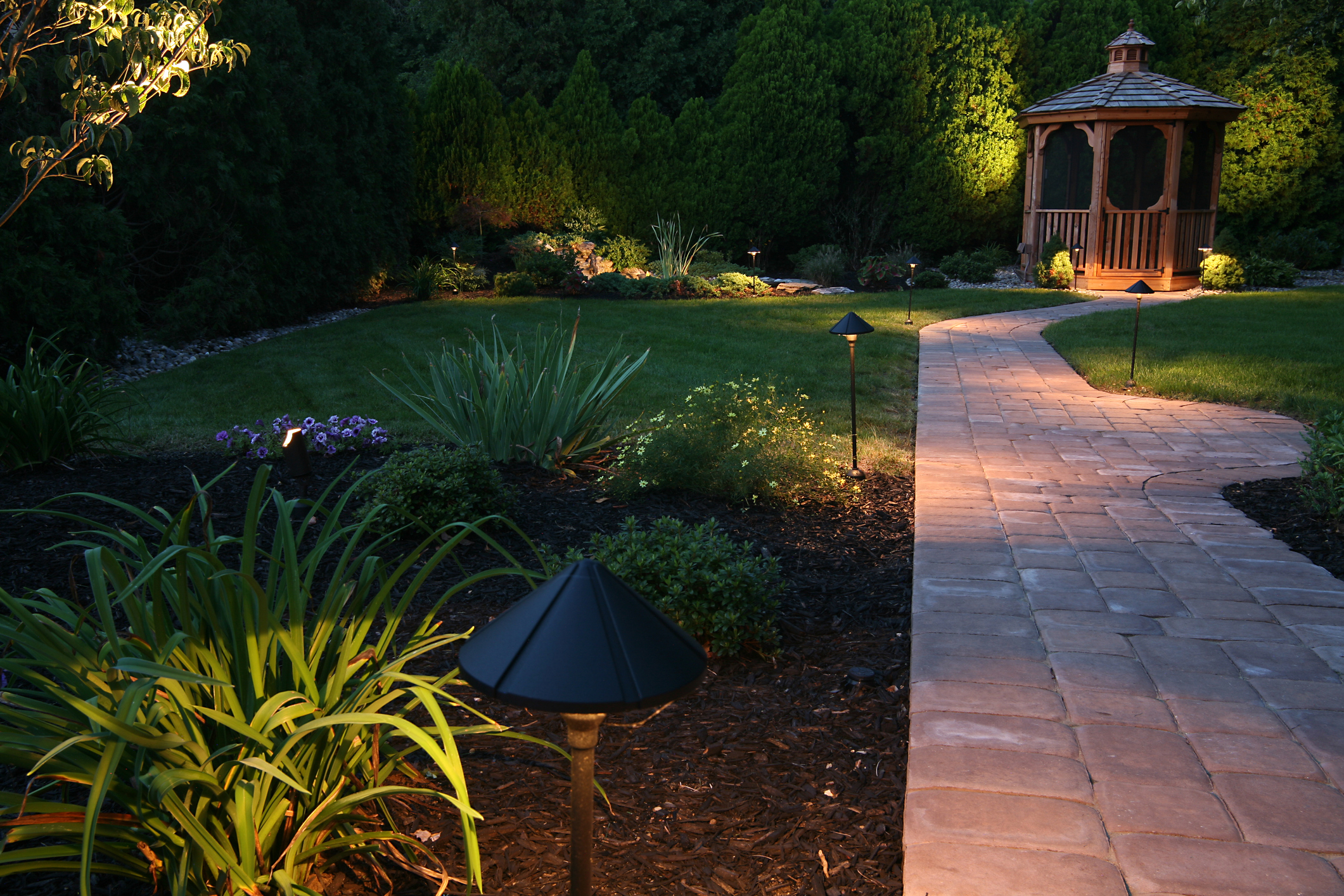
Select your favorite forms of illumination for your nighttime garden, whether it be entryway, pathway, or pendant lighting. Choose mini lights, lanterns, patio string lights, or others. Highlight certain plants or areas to dazzle your evening visitors as they stroll the path through your garden. Note: Be sure to turn all lights off at night whenever possible. Light pollution is real and can cause problems for various types of wildlife over time.
Have a focal point, like a unique sculpture or large plant
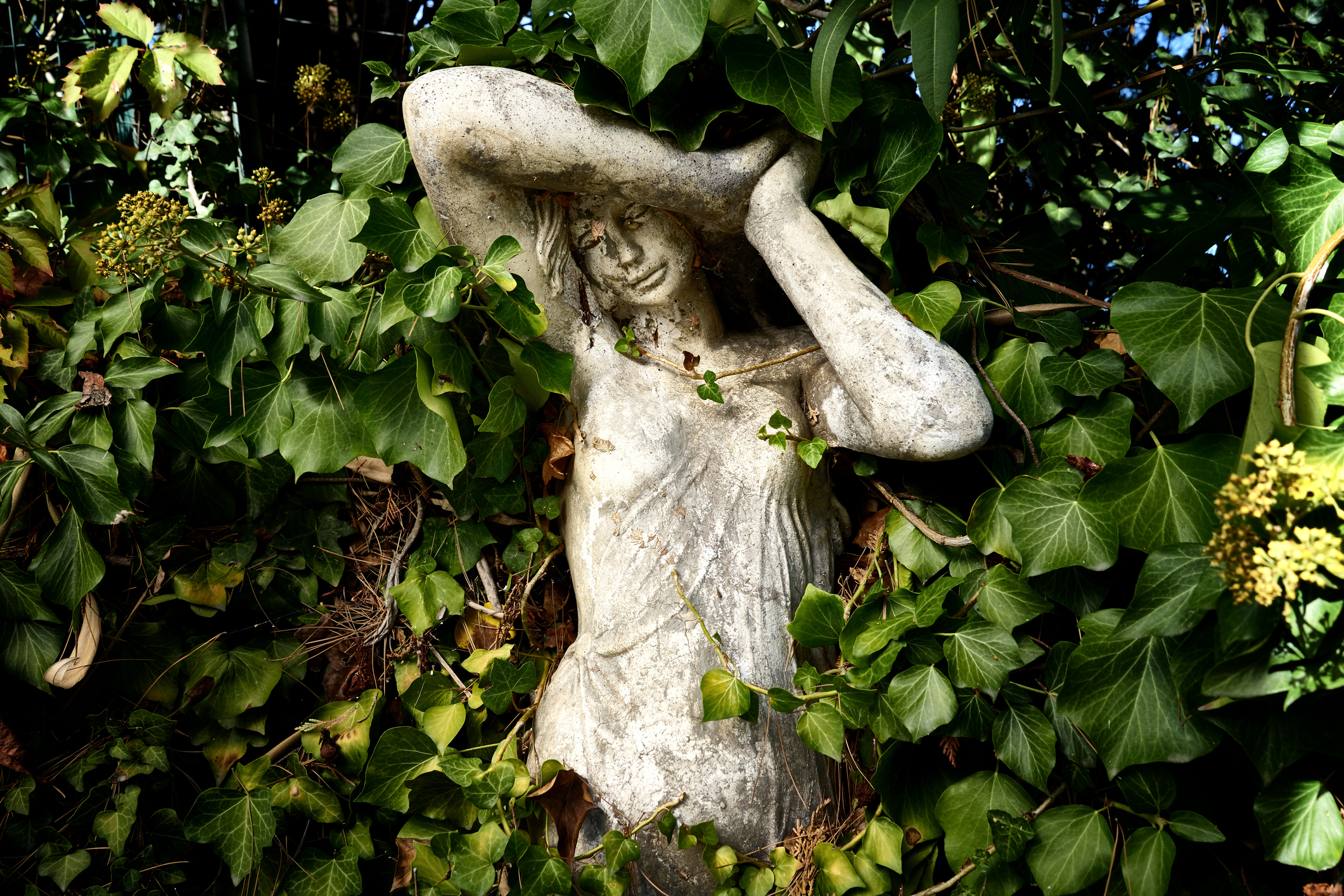
A nice clear focal point draws the eye toward it, especially when lit up at night. Plants, sculptures, lighting fixtures, vintage farmhouse decor, or unique planters can all be great focal points for a modern garden. If you go with a sculpture or piece of decor, remember that the more-formal pieces should be highlighted in the center of the garden, while less-formal pieces should be enjoyed along the side or in corners.
Include a water feature
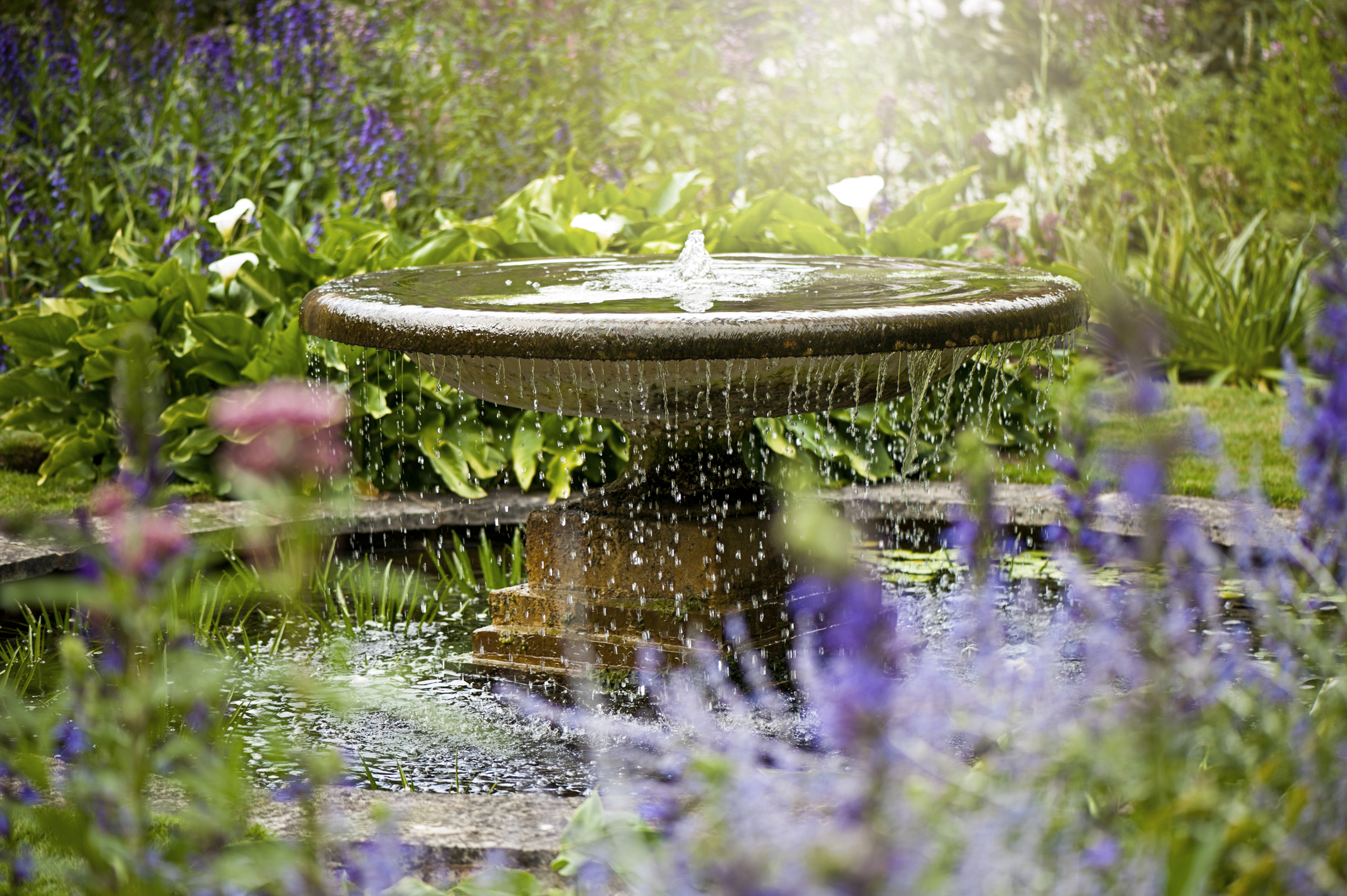
Water features add an element of relaxation to any garden, especially with the pleasant sounds of water trickling in the background. Go for a simple and stylish design for an elegant look.
These can take the form of fountains, reflecting pools, natural ponds (with or without fish), waterfalls, rain curtains, bird baths, and more. If you’ve got a large glass bowl and some attractive marbles, you can create a bee-watering station for pollinators using this tutorial, as well.
Create contrast
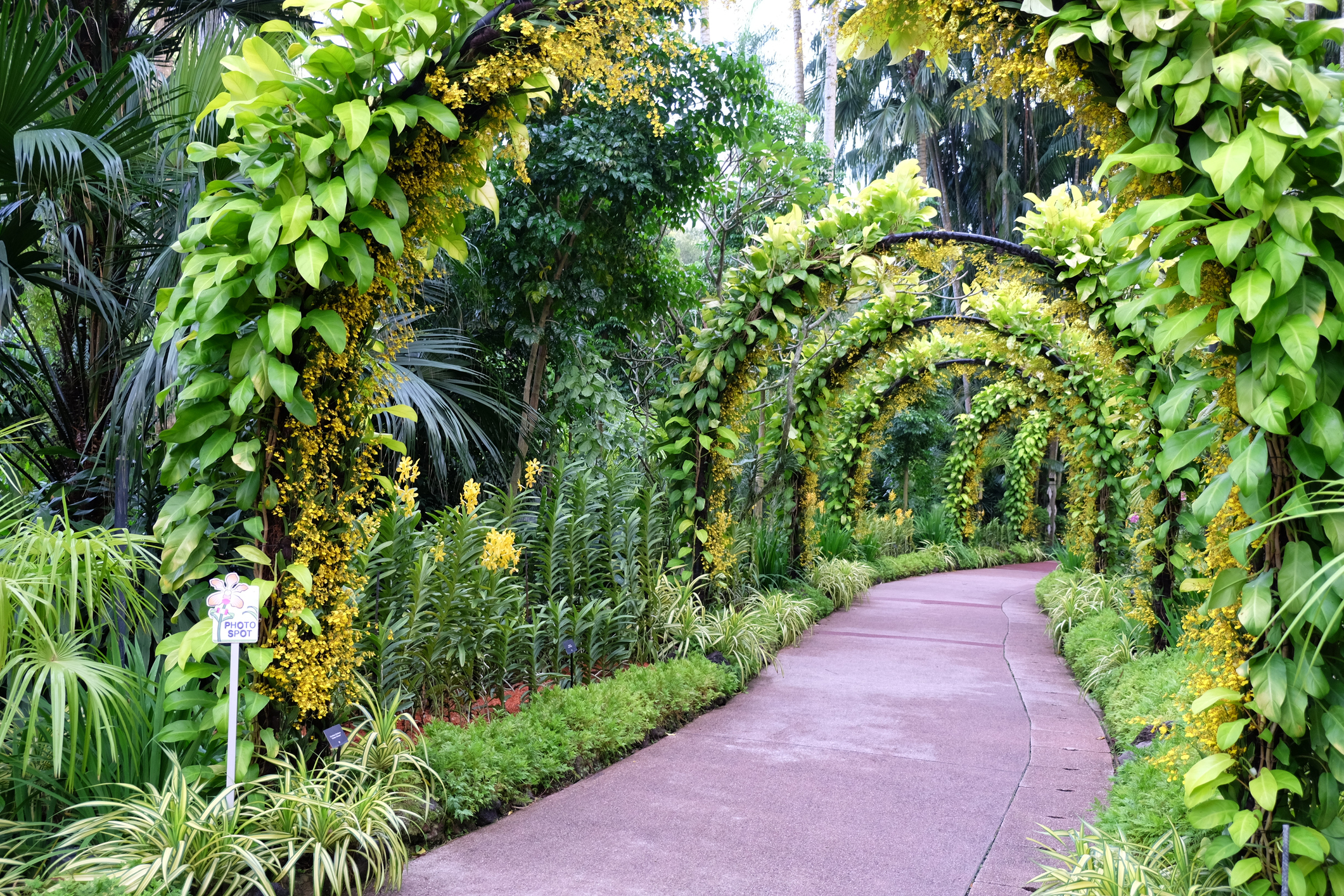
Contrast makes a space more visually interesting, a trait you’ll definitely want. Pair straight-edged pathways with tall, showy irises and native grasses, or mix dark patio pots and benches with perky, white flower blossoms and a pattern of bright-colored lanterns. Contrast textures by putting natural wood against man-made metal. Shine a beautiful nighttime light onto neutral and coral-colored rocks along a darker tree-lined path. There are countless ways to create contrast in your garden.
Go for no-fuss plants over high-maintenance rose bushes
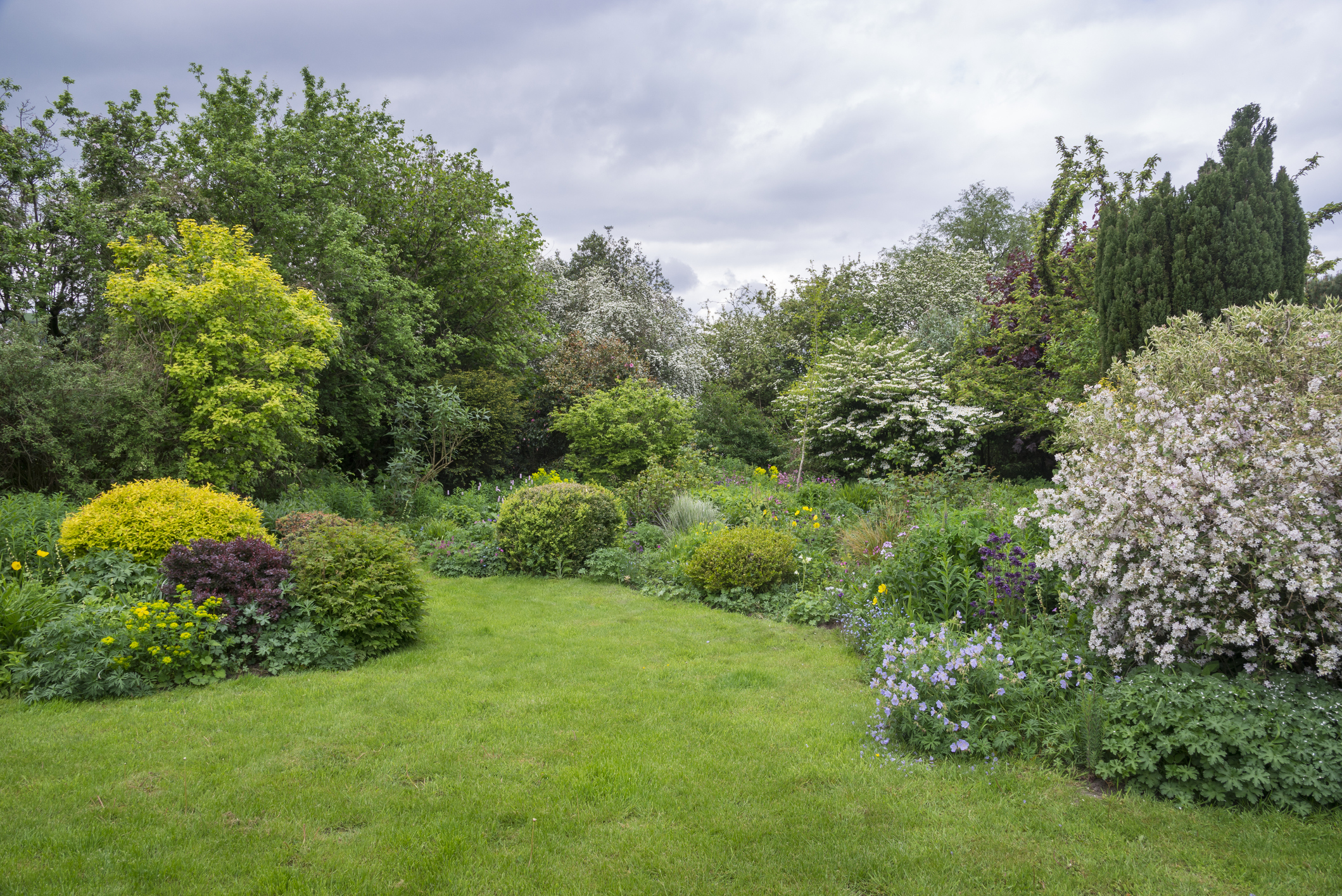
Whenever possible, choose hardy drought-resistant, heat-resistant, easy-care plants and flowers. A garden with a majority of native plants and grasses is ideal, but you could also select lilies, marigolds, dahlias, hostas, spotted laurel, peonies, salvia, lavender, and cosmos. Feeling extra lazy? Start with some super-easy potted herbs and go from there. Don’t feel like mowing a steep hill? Cover it with easy-care, quick-spreading flowers like petunias instead.
Repeat patterns in intervals, shapes, and colors
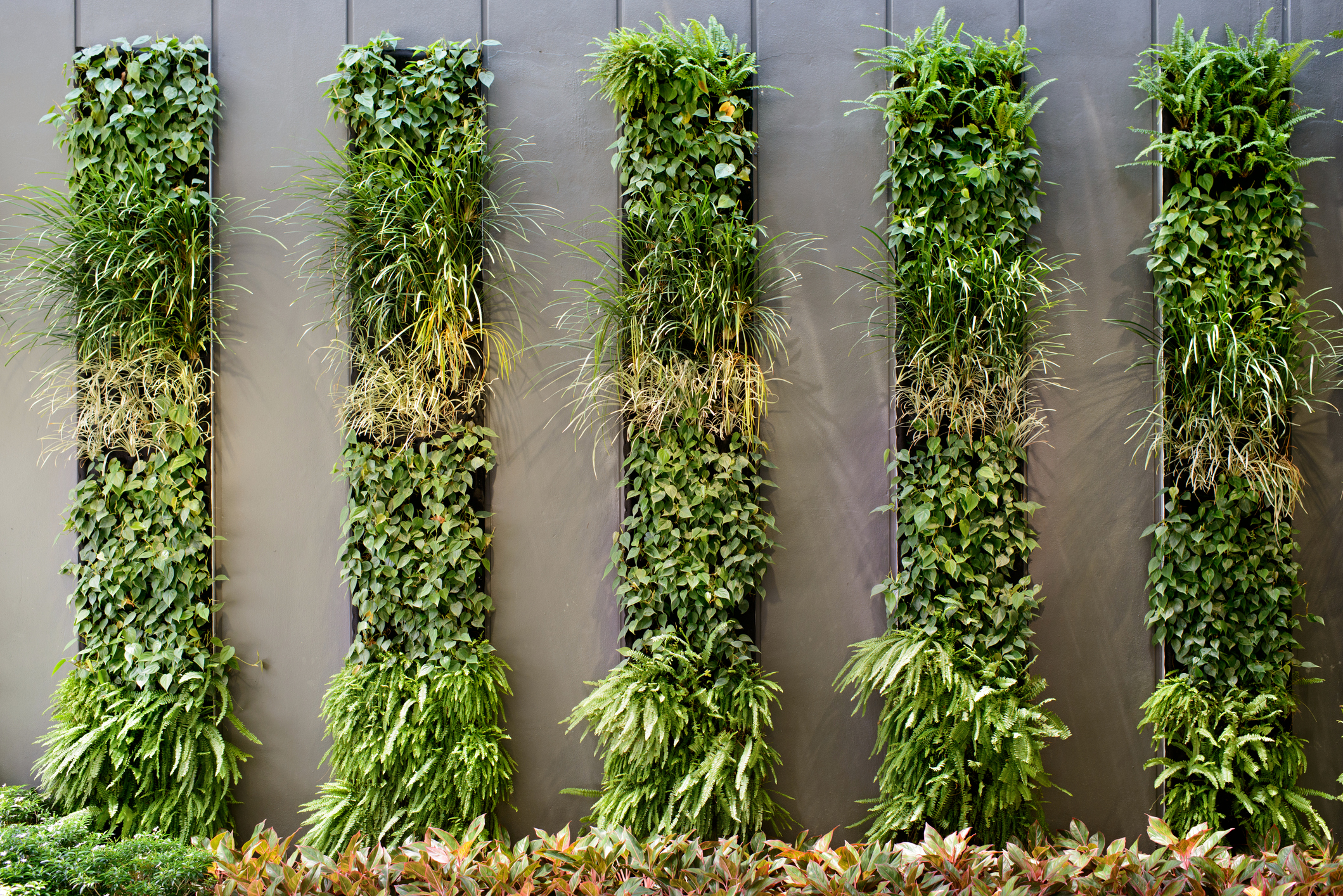
Modern gardens employ patterns in various ways in order to control, organize, and give definition to the space. This can be achieved in several ways. Atlanta garden designer Ryan Gainey explains, “Patterns can be created with physical structures like arbors, fences, gates, pathways, and other hardscaping. They can also be formed by repeating objects or manipulating plants. A garden needs patterns to hold it together.” Try creating your own unique patterns with what you have, whether it’s multicolored flowers, different textures, mosaics, pebbles, or planters in different shapes.
Clean, clutter-free lines
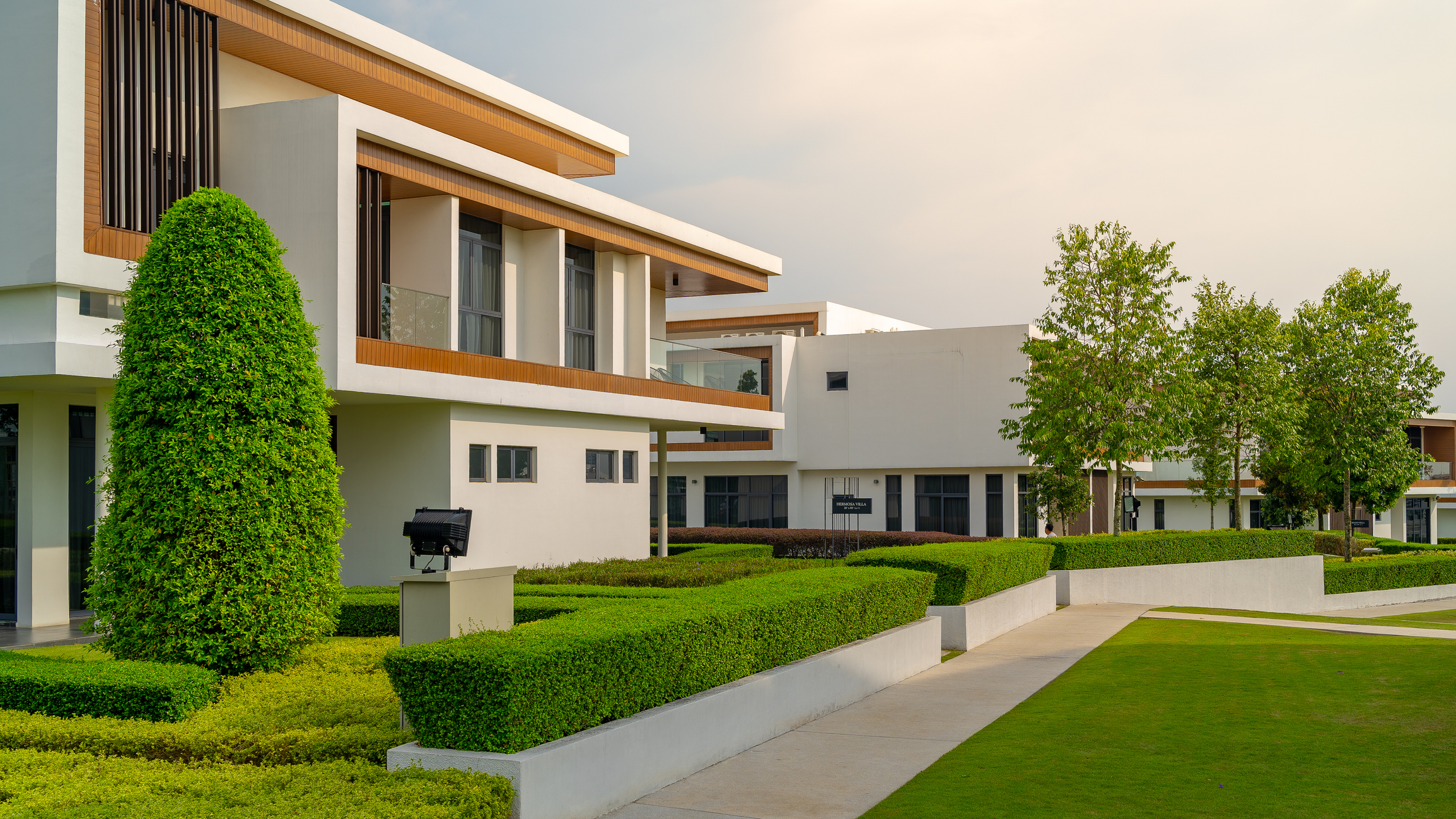
Contemporary gardens are all about that clear, clean space — no clutter. Crisp edges may be paired with swaying native grasses to encourage textural contrast at times, but overall the theme of today’s modern garden is neat, with no extra. If you’ve chosen low-maintenance plants, you should already be a step ahead on this. Keep the hedges trimmed up sharp and the pathways swept clear of debris. Color patterns should be kept intact with each flower in its place. This allows guests and residents alike to enjoy the easy, minimalist, calm energy of the garden.
Geometry
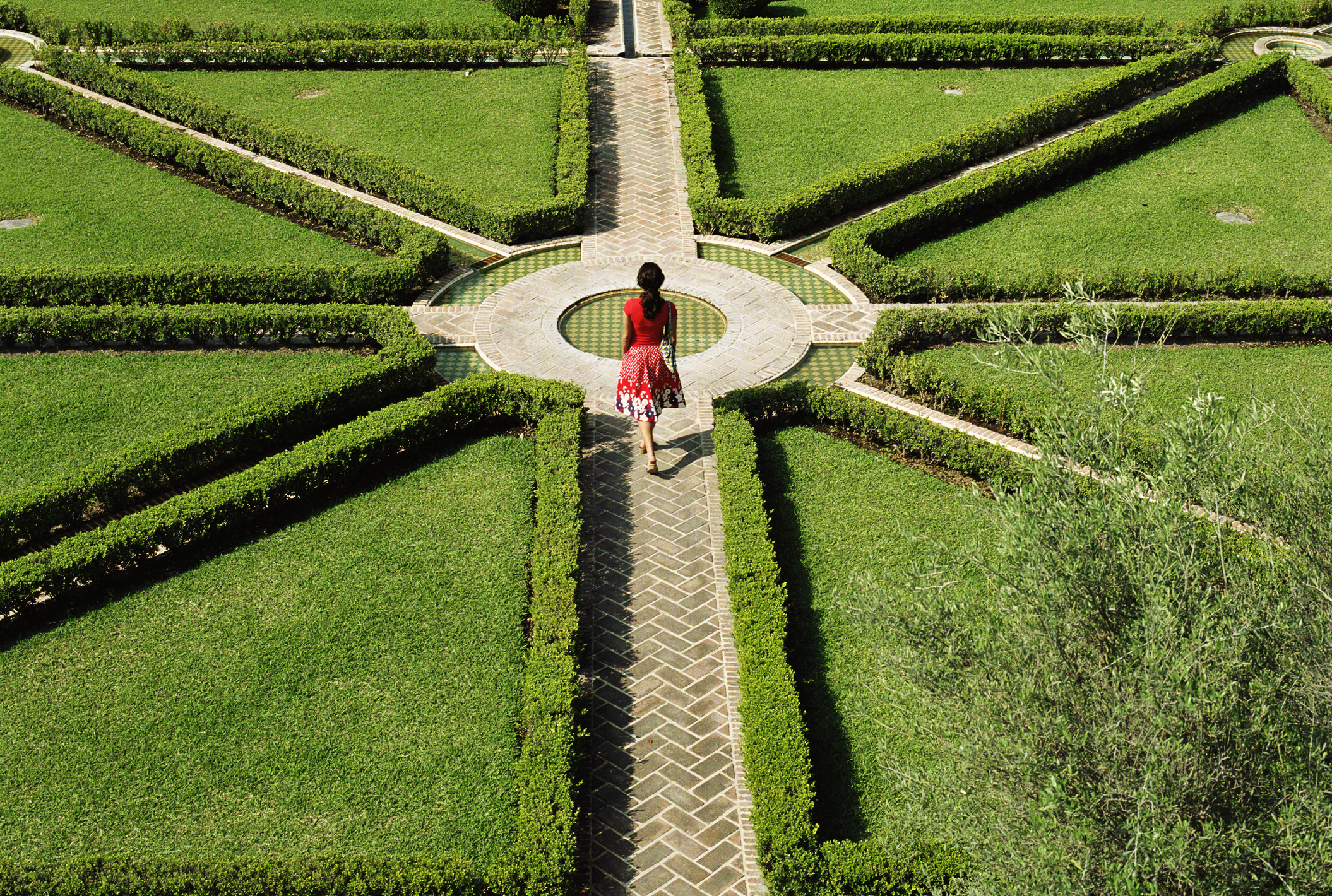
Use geometry, both nature’s own and man-made, to create the most impressive modern space for a garden. Pair the symmetry found in nature, as well as the spirals, stripes, and waves, with the diamonds, squares, and triangles of humanity’s geometry for a stunning appearance. This can be integrated with the patterns discussed earlier for best results. Alternate white diamond-shaped stepping stones across black pebbles or grass, and match a meticulously paved path against curved rows of red daylilies, blue salvia, and orange marigolds. There are many ways to achieve a great modern garden look with geometry, so be creative!
A bit more on green roofing:
As discussed in the beginning, green rooftop gardens are becoming more popular in larger cities, and with good reason. These green roofs offer many of the principles of today’s modern gardens, as well as enhanced biodiversity, possible flood solutions, and an innovative way to keep buildings cool in the summer and warm in the winter, lowering energy costs overall. (Note: Cities like Chicago have maps available for residents to search for its nearest green roofs, so you can take a peek at a few more designs).



